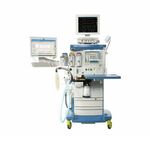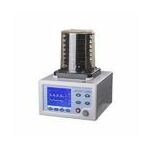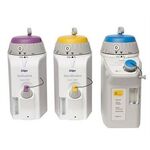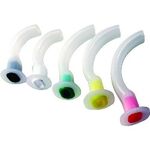Anesthesiology Equipment
Description of Anesthesiology Equipment:
Anesthesia machines are medical equipment used during surgery to provide safe and effective care to patients. Anesthesia Machines With their state-of-the-art technology, anesthesia machines can monitor vital signs such as respiratory function, heart rate, blood pressure, oxygen status, and temperature. This machine ensures an appropriate balance between depth of sedation and safety for each patient. These machines are designed to provide an appropriate level of anesthesia and oxygenation while ensuring patient safety.
Features of Anesthesia Machines:
Anesthesia machines are sophisticated medical devices that come equipped with a range of features to ensure the safety and comfort of patients during surgery.
- Vaporizers: Vaporizers are an integral part of anesthesia machines, as they convert liquid anesthetic agents into vapor form. These vaporizers are designed to deliver a precise concentration of anesthetic agents, ensuring that patients receive the appropriate level of anesthesia.
- Oxygen Delivery Systems: Anesthesia machines come equipped with oxygen delivery systems that deliver the appropriate amount of oxygen to patients during surgery. These systems ensure that patients receive enough oxygen to maintain adequate oxygenation during the surgery.
- Ventilators: Anesthesia machines also come equipped with ventilators that help patients breathe during surgery. Ventilators are designed to deliver a controlled amount of air into the lungs, ensuring that patients receive the appropriate level of ventilation.
- Monitoring Systems: Anesthesia machines come equipped with a range of monitoring systems that help clinicians monitor patients' vital signs during surgery. These monitoring systems include ECG monitors, pulse oximeters, blood pressure monitors, and capnography monitors.
- Safety Features: Anesthesia machines come equipped with a range of safety features designed to prevent accidents and ensure the safety of patients during surgery. These safety features include alarms that alert clinicians to any issues with the machine, as well as fail-safe systems that prevent the delivery of excessive anesthetic agents.
Uses of Anesthesia Machines:
Anesthesia machines are used in a range of medical settings, including hospitals, clinics, and surgical centers.
- General Anesthesia: Anesthesia machines are primarily used to deliver general anesthesia to patients during surgery.
- Regional Anesthesia: Anesthesia machines can also be used to deliver regional anesthesia, which involves numbing a specific part of the body.
- Sedation: Anesthesia machines can be used to deliver sedation to patients undergoing minor procedures or diagnostic tests.
Types of Anesthesia Machines:
There are several types of anesthesia machines available in the market, each with its unique features and benefits. Here are some of the common types of anesthesia machines:
- Portable Anesthesia Machines: Portable anesthesia machines are compact and lightweight, making them ideal for use in remote locations, ambulances, and other mobile settings. These machines are designed to be easy to transport and set up, making them perfect for use in emergency situations.
- Standalone Anesthesia Machines: Standalone anesthesia machines are larger and more sophisticated than portable machines. These machines are designed to be used in operating rooms and other clinical settings and come equipped with a range of features and safety systems.
- Integrated Anesthesia Machines: Integrated anesthesia machines are designed to be integrated into anesthesia workstations, allowing clinicians to customize the system to meet their specific needs. These machines offer a high degree of flexibility and can be configured to deliver a range of anesthesia techniques.
- MRI-Compatible Anesthesia Machines: MRI-compatible anesthesia machines are designed to be used in magnetic resonance imaging (MRI) environments. These machines are specially constructed to prevent interference with the MRI machine and are designed to deliver safe and reliable anesthesia to patients undergoing MRI scans.
- Veterinary Anesthesia Machines: Veterinary anesthesia machines are designed specifically for use in veterinary clinics and hospitals. These machines are similar to human anesthesia machines but are adapted to meet the unique needs of animals.
- Transport Anesthesia Machines: Transport anesthesia machines are designed to be used during the transport of critically ill patients. These machines are compact and lightweight and come equipped with a range of features to ensure the safe transport of patients.
Each type of anesthesia machine has its unique features and benefits, making it important to choose the right machine for the specific needs of the patient and the clinical setting.
Top Brands and Models:
- Dräger Fabius GS Premium: The Dräger Fabius GS Premium is a popular standalone anesthesia machine that comes equipped with a range of features, including an electronic flow sensor, a large touch screen, and an advanced ventilation system.
- GE Aisys: The GE Aisys is a sophisticated integrated anesthesia machine that can be customized to meet the specific needs of the patient and the clinical setting. The machine comes equipped with advanced monitoring and ventilation systems, making it ideal for use in complex surgical procedures.
- Mindray A7: The Mindray A7 is a standalone anesthesia machine that is designed to deliver safe and reliable anesthesia to patients during surgery. The machine comes equipped with a range of features, including a touchscreen interface, a modular design, and an advanced ventilation system.





